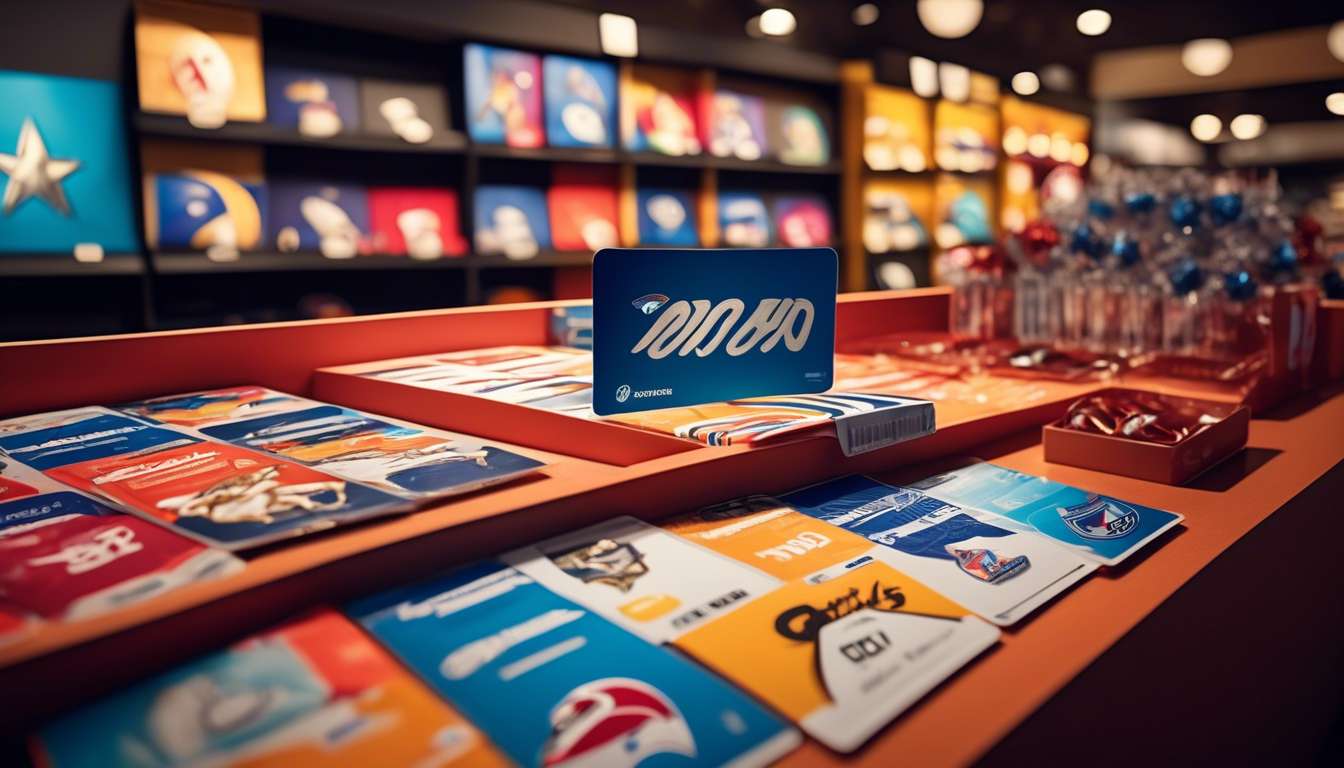As avid sports enthusiasts and seasoned bettors, we collectively share a passion for the thrill of the game and the strategic dance of wagering. Together, we’ve navigated the exhilarating highs and the humbling lows of sports betting—a world where every match offers potential, and every outcome holds a lesson.
A common question we face is: "How many units should we bet?" This query is more than just a strategic decision; it’s a crucial part of responsible gambling. Ensuring that our love for the sport remains sustainable and enjoyable is paramount.
In this article, we aim to demystify the concept of betting units by providing insights into how to determine the right amount to wager, balancing risk with reward. Our goal is to:
- Define what a betting unit is.
- Explain its importance in bankroll management.
- Offer strategies for determining unit size based on individual risk tolerance.
By sharing our collective experiences and strategies, we hope to empower others to make informed decisions that enhance our shared passion for sports betting.
Key Points to Consider:
-
Betting Unit Definition: A betting unit is a standardized measure of the amount you wager, typically a small percentage of your total bankroll.
-
Importance of Betting Units:
- Helps manage betting funds efficiently.
- Prevents emotional and impulsive betting.
- Facilitates consistent betting strategies.
-
Strategies for Determining Unit Size:
- Assess your total bankroll.
- Decide on a percentage (often 1-5%) that reflects your risk tolerance.
- Adjust unit size as your bankroll grows or shrinks.
By following these guidelines, we can ensure our sports betting activities remain both exciting and responsible, allowing us to enjoy the game while minimizing financial risk.
Understanding Betting Units
Betting units are a fundamental concept in sports betting, helping us manage risk and measure performance effectively. When we talk about betting units, we’re referring to a standardized way of expressing our bets relative to our bankroll.
This approach allows us to:
- Compare results
- Communicate strategies with fellow bettors
Using betting units ensures consistent bankroll management, enabling us to assess risk tolerance and adjust our strategies accordingly. It’s about understanding how much of our bankroll we’re willing to risk on a particular outcome. This method fosters a sense of belonging among us, as we all adhere to a common language and approach.
Embracing these concepts enhances our collective journey in sports betting. We avoid:
- Overextending ourselves
- Chasing losses
This ensures that our shared passion for sports betting remains a sustainable and enjoyable pursuit.
Establishing Unit Guidelines
To set effective unit guidelines, we first need to determine the percentage of our bankroll we’re comfortable risking on each bet. This step is crucial for successful bankroll management.
Assessing Risk Tolerance:
- Individual Assessment: Each of us must assess our own risk tolerance to find that sweet spot where we’re both comfortable and strategic.
- Establishing Betting Units: By setting our betting units based on what feels right for us, we ensure a sense of security and community in our betting decisions.
Balancing Ambition and Caution:
- Our betting units should reflect a balance between ambition and caution.
- A common approach is to risk 1-2% of our bankroll per unit, which aligns well with most bettors’ risk tolerance.
- This strategy helps us navigate the highs and lows of sports betting without undue stress.
By collectively adhering to these guidelines, we create a unified approach that promotes long-term sustainability.
Let’s remember, our unity in following disciplined betting units strengthens our community and enhances our shared betting experience.
Calculating Unit Size
To calculate our unit size effectively, we first determine the ideal percentage of our bankroll we’re willing to risk on each bet. It’s crucial that we consider our personal risk tolerance, ensuring we don’t jeopardize more than we can comfortably afford.
Typically, this percentage ranges from 1% to 5%, depending on how conservative or aggressive we choose to be with our betting strategy.
Once we’ve settled on a percentage, we multiply it by our total bankroll to establish our unit size.
For example, if our bankroll is $1,000 and we’ve decided on a 2% risk tolerance, each unit would be $20. This approach allows us to maintain consistency and discipline, which are essential components of effective bankroll management.
By using betting units as a standardized measure, we create a sense of community and shared understanding among fellow bettors. This not only helps us stay on track but also fosters a supportive environment where we all aim to succeed together in the sports betting world.
Importance of Bankroll Management
Effective management of our bankroll is crucial for sustaining long-term success in sports betting. By carefully considering our betting units, we can protect our financial resources and foster a sense of community among fellow bettors. Our shared experiences and strategies help us navigate the ups and downs of this exciting journey.
Bankroll management involves more than just limiting losses; it’s about maximizing growth potential without risking everything on a single bet.
- Setting aside a specific amount as our bankroll acts as a safety net.
- This practice allows us to enjoy the thrill of betting while ensuring our finances are secure.
- It enables us to engage in betting with confidence and camaraderie.
Our approach to risk tolerance significantly influences how we manage our bankroll.
- Aligning our betting units with our comfort levels ensures we don’t overextend ourselves.
- Together, we can cultivate a responsible and sustainable betting environment where everyone thrives.
By adopting these strategies, we enhance both our individual success and the collective experience of the betting community.
Setting Risk Tolerance Levels
To effectively manage our sports betting endeavors, we must first determine the level of risk we’re comfortable taking on. Understanding our risk tolerance is essential for successful bankroll management and making informed decisions about betting units.
As a community of responsible bettors, we aim to strike a balance between excitement and prudence, ensuring our financial safety while enjoying the thrill of the game.
Our risk tolerance dictates how aggressive or conservative we should be with our betting units. Some of us may prefer a cautious approach, risking smaller percentages of our bankroll on each wager. Others might embrace higher risk, seeking bigger rewards but ready to weather potential losses.
By recognizing our comfort levels, we can tailor our strategies and stay committed to our financial goals.
Let’s remember, we’re part of a community that values smart decisions and mutual support. By setting appropriate risk tolerance levels, we can enjoy the camaraderie of sports betting while safeguarding our investments.
Factors Influencing Unit Decisions
Bankroll Management
Bankroll management is vital for sports bettors. It helps sustain betting activities and ensures that we don’t risk too much on any single wager. By carefully managing our bankroll, we can enjoy the thrill of betting while minimizing potential losses.
Individual Risk Tolerance
Our individual risk tolerance levels significantly influence our unit decisions. Some bettors are comfortable with higher risks, while others prefer a more conservative approach. Understanding where we fall on that spectrum allows us to set unit sizes that align with our comfort zones.
Sport or Event Specifics
The specific sport or event we’re betting on can also impact our unit size. Some sports have more volatility than others, requiring us to adjust our unit sizes accordingly.
By considering these factors:
- Bankroll management
- Individual risk tolerance
- Sport or event specifics
We can make informed decisions that enhance our sense of belonging within the betting community.
Adapting Unit Sizes
Our ability to adapt unit sizes based on changing circumstances is crucial for maintaining a successful betting strategy.
Together, we navigate the dynamic world of sports betting, where flexibility becomes our strongest ally. By adjusting our betting units, we can respond to shifts in our bankroll and risk tolerance, ensuring we stay on track.
Key Strategies for Adapting Unit Sizes:
-
Increase Unit Sizes:
- When our bankroll grows, we might increase unit sizes to capitalize on our success.
-
Decrease Unit Sizes:
- Conversely, a shrinking bankroll prompts us to reduce unit sizes, preserving our funds and limiting potential losses.
Effective Bankroll Management:
- It’s not just about numbers; it’s about understanding our own comfort levels.
- By recognizing when to adjust, we protect our investments and align our strategies with our personal risk tolerance.
Community and Learning:
- This adaptability fosters a sense of community among us, as we share and learn from each other’s experiences.
- Let’s remain committed to smart betting practices, ensuring our strategies reflect our evolving circumstances and keep us connected as we pursue our shared goals.
Maximizing Betting Efficiency
To maximize our betting efficiency, we need to focus on strategic decision-making and effective resource allocation. By aligning our approach with our community’s best practices, we can enhance our chances of success.
1. Consistent Betting Units
- Ensure our betting units align with our overall strategy.
- Allocate a percentage of our bankroll that reflects our risk tolerance.
- Avoid impulsive bets that might jeopardize our carefully managed resources.
2. Bankroll Management
Bankroll management is crucial for maintaining long-term sustainability. Together, we must decide how much of our bankroll we’re willing to risk on each bet.
- Set a standard unit size.
- Control our spending.
- Maintain discipline, even when tempted to overextend by the excitement of the game.
3. Continuous Learning and Adapting
Let’s commit to continuous learning and adapting. Sharing insights and experiences with our betting community strengthens our collective knowledge.
With each calculated move, we’re not just betting; we’re building a more informed and resilient group.
Conclusion
Determining Your Unit Size
When engaging in sports betting, determining your unit size is crucial. A unit represents a fixed percentage of your total bankroll and acts as a baseline for each bet you place.
Managing Your Bankroll Effectively
Effective bankroll management involves several key steps:
-
Set Clear Guidelines:
- Decide on the percentage of your bankroll that constitutes one unit. Typically, this ranges from 1% to 5% depending on your risk tolerance.
- Establish rules for increasing or decreasing your unit size based on your bankroll’s growth or reduction.
-
Assess Risk Tolerance:
- Understand your comfort level with risk, which will influence your unit size. Lower risk tolerance may mean smaller unit sizes, while higher tolerance could allow for larger units.
-
Adjust Unit Sizes as Needed:
- Periodically review your bankroll and adjust your unit size accordingly. This ensures that your betting remains proportionate to your available funds.
Maximizing Betting Efficiency
By adhering to these guidelines, you can maximize your betting efficiency. This strategic approach helps you make informed decisions, minimizing the emotional aspect of betting.
Consistency and Discipline
Remember, consistency and discipline in managing your units are essential. These traits will lead to more stable outcomes and can help you navigate the unpredictable nature of sports betting.
In summary, focusing on these aspects will significantly enhance your chances of making profitable decisions in the long run.





